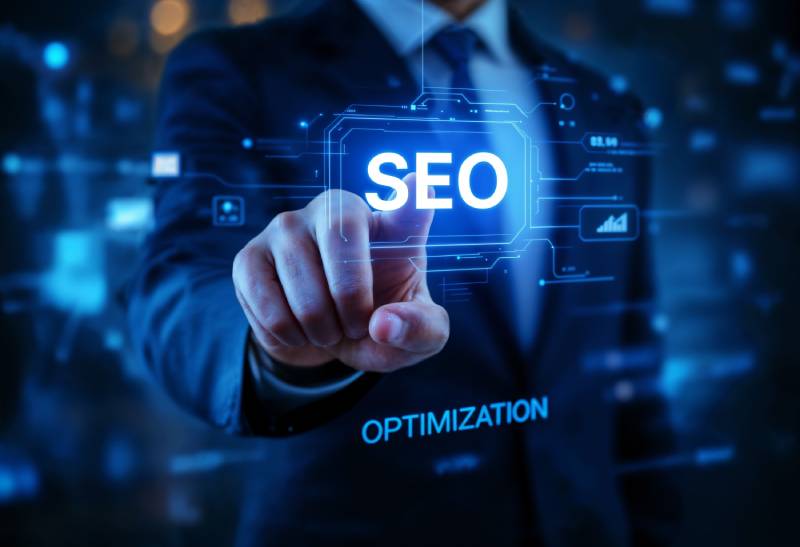Anyone with a website will likely have heard of SEO. You might have an SEO campaign running and going, or maybe you have engaged someone else to optimise your web page for you.
However, how well do you understand a website’s SEO process?
What is On-Page SEO and how does it work?
On-page SEO means the practice and strategy of optimising web pages in an attempt to improve a website’s search engine rankings and earn organic traffic.
In addition to publishing relevant, high-quality content, on-page SEO includes other aspects of optimisation. This can include rewriting your headlines, editing your HTML tags and renaming your image files. All these combine to give your website a higher level of trustworthiness and ranking metrics in the eyes of search engines.
Search engines take into account various aspects of a webpage when ranking it. Improving these metrics, through on-site SEO would give your website better visibility and traffic in the search results.
Why is On-Page SEO Important?
As search engines improve and evolve, there is a higher focus placed on matching the relevance of content and questions. Knowing the reason behind a user’s search and having a proper SEO framework in place are important in keeping your business ahead of the digital marketing race.
On-page SEO is essential as it is an aspect of SEO that you have total control over. Changes to your website can be implemented and made swiftly, as long as you know what to include. With proper on-page SEO campaigns, you can make your website more usable and valuable.
A higher search ranking could be increased traffic to your site and allow you to attempt to convert your visitors into paying customers.
2023 On-Page SEO Best Practices
Want to boost your organic traffic this year? It’s time to update your knowledge! The online world changes every minute of every day. The top tricks for on-page SEO that you read last year may be obsolete now.
Keeping your knowledge fresh is paramount in technology, whether it’s on the back end or the front end. The competition gets fierce by the day and your audience is continually migrating between platforms and devices. To be found online, you need to be familiar with the latest algorithm changes and search engines.
Your On-Page SEO Checklist + Template
Ready to boost your search rank? Let’s take a step-by-step look at the most important components of SEO. Every time you are posting anything on your site, it’s crucial to go step-by-step.
To ensure you never miss a step along the way, copy and paste this on-page SEO template into your document to customise it. While there are a lot of elaborate SEO templates out there, it’s best to keep it simple. With a straightforward SEO checklist, you can quickly and efficiently move through all of the key components.
On-Page SEO Checklist Template
- Target keyword: ____________
- Keyword used in URL
- Keyword used within first 100 words
- Keyword in the page’s title tag
- Keyword is in an H1 heading
- Keyword is in an H2 heading
- Keyword used in your image filenames and alt text
- Your post has at least five internal links to other pages on your site
- You have external links to relevant and trusted sites
- You’ve used synonyms and terms related to your keyword
- _______________
- _______________
- _______________
- You’ve got an engaging meta-description
- Your site works well on mobile devices
- You’re using structured data
- Check Google’s first page of results to confirm you’ve matched the search intent
- Make sure your content is sticky
What On-Page SEO Ranking Factors Should I Optimise for?
It is crucial we examine the on-page SEO techniques Google commonly uses to access a page’s SEO score.
We have broken the on-page SEO factor down into 6 critical factors that search engines have a strong emphasis on.
URL
Your URL is like your mailing address. It is your website’s address. URLs for websites should aim to provide brief descriptions of your page’s topic. Not only is this helpful for internet bots, but it will also be helpful for your readers.
For example, if you are running a blog on pet-friendly cars, it will be helpful to have a www.yourwebsite.com/pet-friendly-cars-models.
A glance at the URL and you would understand the site is likely to be about car models that can meet the demand and needs of pet owners.
However, it is important to not overload your website’s URL. No one likes a long URL, especially not one that is spelt out like
“www.yourwebsite.com/pet-friendly-cars-models-that-put-pet-owners-mind-at-ease-forever-buy-it-now”
Including your target keyword in your URL text, instead of a long string of numbers and alphabets, also makes your site easier to navigate and gives visitors a better view and idea of your website’s infrastructure.
Having a clean organised URL helps improve your website’s search ranking results and first impression.
Quality Content
Google loves useful and resourceful sites which benefit the readers. They are looking for sites that can engage their audience and answer their questions with quality content.
But what makes good content?
From an SEO perspective, good content means that the website’s content must meet a demanded enquiry. Good content needs to be able to be a form of answer or discussion to an enquiry or topic that is filed to Google through the search bars.
An example of quality content can be in the form of “how-to” articles or guides to educate the readers on a common topic of enquiry. Aim to write about specific benefits or knowledge that readers can apply to and enhance their lives. Actionable and helpful content is always appreciated by readers.
Avoid generating content automatically. Automatically generated content is not optimised for your business and may deviate your SEO strategy away from your target audience in the long run.
Duplicated content may also hurt your site. You should generate your own content, information and knowledge to establish yourself as an authority in your industry while following closely Google’s SEO guidelines.
Leading Solutions also provide content creation services so you can focus on other important aspects of your business.
Write Unique, Optimized Content
In the realm of SEO, content is king. Google promotes relevant, meaningful, and optimized information that meets users’ demands as thoroughly as possible because its main purpose is to give searchers exactly what they’re looking for.
What exactly is optimal content then? It is content that strikes a balance between authoritative writing and keyword research.
Furthermore, your content must be original. This not only makes you stand apart from the competition but also helps prevent any unintentional plagiarism, which could harm the credibility of your website and lead to a manual sanction.
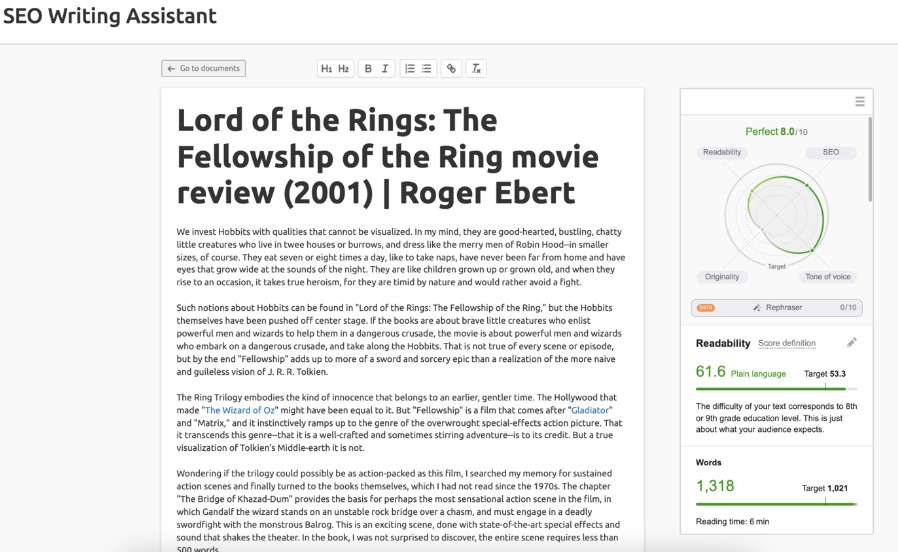
To find out if your content is optimized for readability, keyword possibilities, and general uniqueness of your content/text, run it via our SEO Writing Assistant tool.
Including relevant outbound (or external) links within your content inform Google about the subject matter of your website.
Internal linkages are also essential to consider.
Creating links from your website’s high-quality, high-performing content can assist other pages to perform better. Including internal (or inbound) connections on your website also makes it easier for Google’s crawler to crawl it.
Make sure that each page on your website has at least one (or a few) links to it from other pages. It will be regarded as an orphaned page otherwise.
In order to expand on a topic or provide a reliable source for a fact, content authors frequently use inbound and outbound links.
Although linking to outside resources won’t immediately improve rankings, it can increase user trust if they see that you are relying on other reliable sources.
However, having a solid internal linking structure makes it simpler for searchers to stay on your site since they may click on the link and browse around more, lowering your bounce rate and enhancing favorable brand associations.
These connections also give Google details about the layout of your website. Google can assess the depth of the information on specific themes and how it ties to other content on the site, further enhancing its ranking.
Starting A Blog
With content, you need a centralised location for it to be placed on your website. And there is no better way than having an organised blog.
Blogs need to be frequently updated for them to be relevant and useful. You need to entice readers to want to read your articles, and that can only be achieved by uploading articles consistently.
Having multiple blog articles and a strong content foundation will also help with your site’s growth, through internal links and content marketing opportunities.
To drive regular organic traffic, you can email out your blog updates or articles through newsletters.
If you are having trouble with churning out consistent quality content, you can consider hiring copywriting services.

Keyword Density
Keyword density refers to the number of times a related keyword appears on the website. While keywords are always welcomed, having too many keywords is not exactly a good thing.
Keyword stuffing is also a practice that is frowned upon by many in the SEO industry. It involves the forced repetition and insertion of words.
Google has recently been placing lesser emphasis on individual keywords and more emphasis on search terms. Search terms are a few words that hint to Google what your business is about.
Stuffing and repeating those keywords on your website would do more harm than good. Instead, use those search terms for your competitor analysis to know how other sites are doing. Take note of what practices those ranking first are employing and seek to duplicate their success by following a common formula.
Read more: SEO Keyword Research Guide for Beginners
Meta Data – Title Tags, Headings Tags
Metadata or meta description are aspects of your website that can help you optimise your on-page SEO. Often referred to as technical SEO, metadata are descriptions of your websites that usually appear on search engine result pages.
Google will bold user search terms that appear in your meta description, which has incentivised many others to optimise their site for it.
Using proper headers also makes your content much more easily readable for users. With core keywords in headings, the search engines understand your context more.
Headings – H1, H2, H3
Properly formatted headers make it easier for web crawlers to understand your website. This could lead to better indexing and ranking of your website.
Following the hierarchy of headings is also important. H1 headers should take precedence, with the following H2 and H3 headers acting as guiding signals, for algorithms and readers to understand the web page and content better.
However, it is important to avoid keyword stuffing when optimising a website for SEO. Instead, your keywords should be used sparingly, to indicate what a section or paragraph is about. This will give readers an understanding of what to expect.
Bounce Rates
The type of content available on your website can also direct your other metrics. Google looks to measure engagement, a non-tangible metric that can allow it to understand how the website interacts with its visitors. Hence, engagement as a metric is commonly proxied by using bounce rates and the time an average user had spent on the site.
If a site’s bounce rate is high, chances are the page is not delivering the result that web users are searching for. To Google, this means that your page lacks value. Google deems websites with high bounce rates to be irrelevant to search terms.
Simply put, pages that are useful and provide content beneficial for target audience members would benefit from Google’s search results. This is because a good website can help retain visitors in the site.
The time a visitor spends on your page tells a lot about the relevance of your site to their needs and interest. A long time spent on your site simply signals to Google that your site is providing useful content that is worth engaging, and Google loves sites with such characteristics.
A high bounce rate is a worrying symptom that deserves a closer look. To monitor and remedy this issue, you can consider opting for a page audit.
Page Loading Speed
Google ranks the page loading factor as a factor for the same reason it measures bounce rates. It wants to know how people view your site.
Apart from tracking how long your visitors spend on your site, it also measures how long you make your visitors wait.
Does your site turn people away?
Does your site take ages to load?
How often do people wait for your site to load?
Not only does page loading speed place a burden on your page’s SEO standings, but it is also harmful to your page’s conversation rate and organic traffic. 40% of people abandon a website that takes more than three seconds to load.
as one of the key components for a page’s SEO. No one likes a slow loading website, and this may lead to an increase in bounce rates and fewer visitor engagements. These statistics point to Google that visitors are unhappy, and without a doubt, this will negatively affect your SEO ranking.
Page Visits
if your audience does look around your site and visit more subpages in your site, Google will see your site as relevant to the needs of the customers or beneficial to the customers as users are moving deeper into your site, hunting for more useful information.
This is also when proper URL infrastructure can help with your page’s ability to retain visitors.
Content marketing strategies are important to not only plan and write but also structure your content for visitors to see and read.
Internal Links
Google loves sites with a good internal linking system – it shows how well organised the site is and how easy it is for visitors to navigate around the web. It makes search engines understand the site better.
As with the case for URLs, internal links make the website’s infrastructure much clearer.
This enhances user experience and as such, Google will prefer your page over others that are difficult to navigate around as a result of a bad internal linking structure.
Including relevant outbound (or external) links within your content inform Google about the subject matter of your website.
Internal linkages are also essential to consider.
Creating links from your website’s high-quality, high-performing content can assist other pages to perform better. Including internal (or inbound) connections on your website also makes it easier for Google’s crawler to crawl it.
Make sure that each page on your website has at least one (or a few) links to it from other pages. It will be regarded as an orphaned page otherwise.
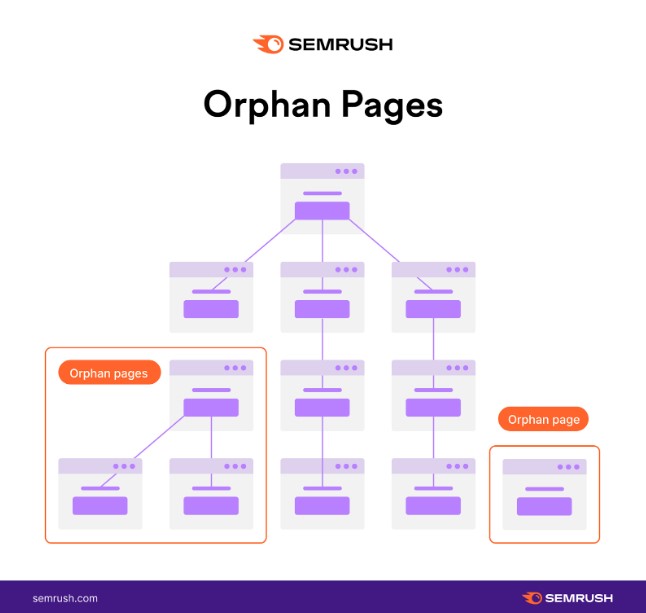
In order to expand on a topic or provide a reliable source for a fact, content authors frequently use inbound and outbound links.
Although linking to outside resources won’t immediately improve rankings, it can increase user trust if they see that you are relying on other reliable sources.
However, having a solid internal linking structure makes it simpler for searchers to stay on your site since they may click on the link and browse around more, lowering your bounce rate and enhancing favorable brand associations.
These connections also give Google details about the layout of your website. Google can assess the depth of the information on specific themes and how it ties to other content on the site, further enhancing its ranking.
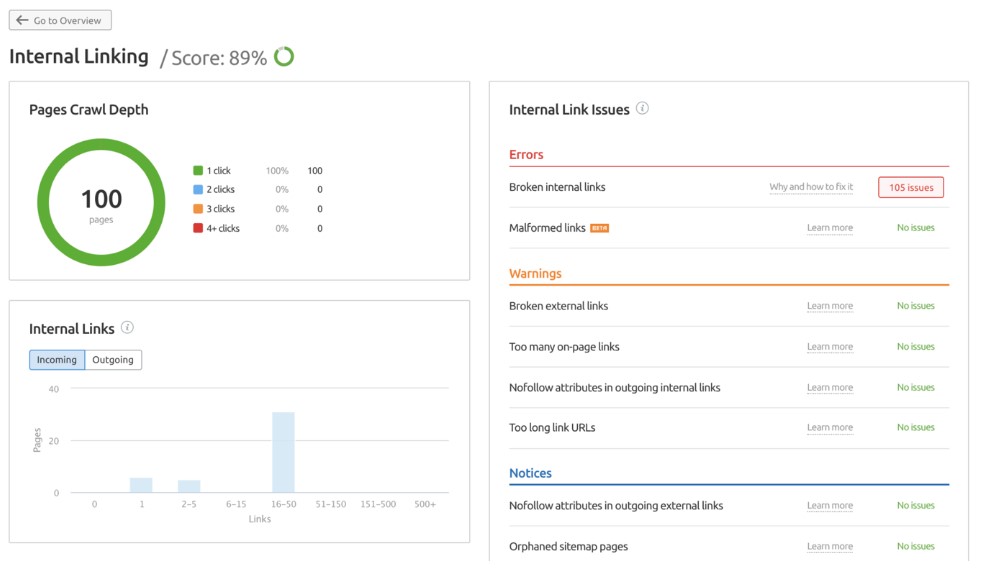
Add and Optimize Images
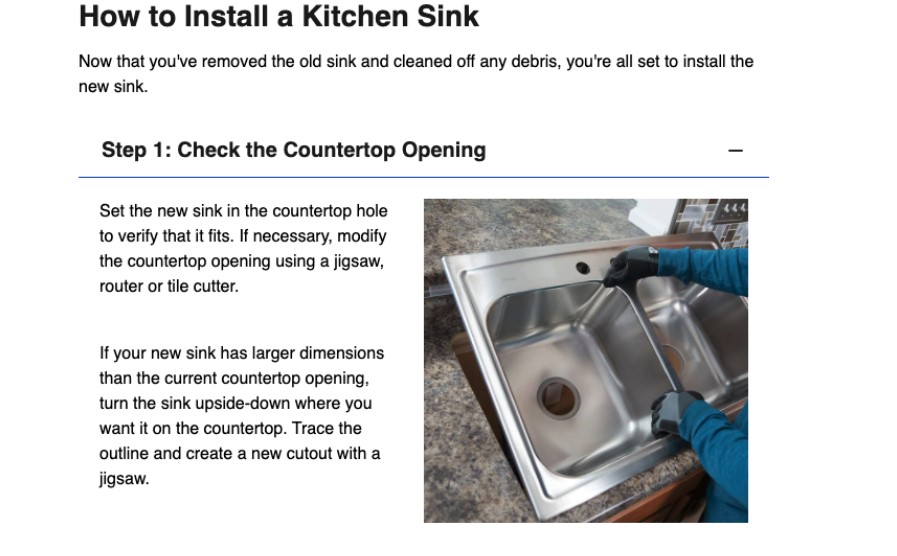
Users are probably less likely to interact with a long wall of pure text in reality. Images are useful in this situation.
Users are more likely to engage with your content when your photographs are more useful.
Pay attention to including images that improve your content. If you design your own visuals to post on social media, bonus points.
Your photos should also be optimized. This entails:
- Ensure that they load quickly by utilizing techniques like lazy loading and lowering the file size.
- Create alt tags that are evocative and clearly describe the image so that Google can recognize it as useful information on your website. Additionally, the alt text enables site visitors who are blind or visually impaired to completely understand and appreciate your material.
- Choosing picture titles and file names that are descriptive of the image and the keywords you wish to include in the content.
Optimize for User Engagement
Your page’s content should draw the reader in and keep them interested. In addition to lowering your bounce rate, you want to increase their time spent on the site.
These elements prove to Google that readers value your content. It also establishes a connection with this specific visitor, who will hopefully develop into a lead in the future.
You may produce content for your website that increases engagement by using the following strategies:
- Use topic-specific headlines to make your information easier to read.
- Creating lists and bullet points to make the text easier to scan
- Adding pictures and video to your content
- Developing pertinent calls-to-action (CTAs) that entice readers to click and obtain pertinent content
- Having a simple, uncluttered design that keeps readers’ attention on your content
- By adhering to load time best practices, you may ensure that the page loads quickly.
- Users may abandon the page right away if they can’t locate what they’re looking for, therefore using above-the-fold can also boost engagement.
- Make sure you start by addressing the core question or topic to avoid this.
Ways You Can Start Optimising Your Website with On-Page SEO

Write Content for The Human Eye
Google wants your pages to be made for readers, not solely for SEO purposes. They penalise pages/sites heavily if they determine the site to be made with the intention to rank at the top of Google. Hard and fast black hat SEO methods to rank higher would result in a terrible fate, as far as Google is concerned.
Google may blacklist the page and remove it from the web search result index completely.
Hence, you should create pages with meaningful and beneficial content for your target audience and not solely for search engine ranking purposes.
Aim to capture the audience’s attention by knowing what is their search intent. Not only will these help you gain a customer base of better-quality audience members, but they will also help you build a better foundation for your website and SEO efforts.
Rename Your Image Files – Use Alt Text
Rename your image files such that it tells people more about your image. Include your website’s name in the image itself and a corresponding title or caption.
Alt text is also a setting in the properties of the picture that you can amend. Adding it is the first principle of web visibility and can be considered the golden rule for image upload. Alt text is used to tell search engines what the picture is about. Using it properly would help Google understand your site better. It provides better context to search engine crawlers, allowing them to index, and rank an image properly.
Search engines respect the alt text function. Having images placed correctly will greatly boost your SEO.
Conclusion
Whilst on-page SEO factors are important, keep in mind that there are also off-page SEO techniques, which play an equally, if not, more important role than on-page SEO factors.
Maximise your efforts to start seeing the best results for your website and business today.
Contact us today for an SEO audit.
Leading Solution is a reputable digital marketing agency in Singapore, talk to us regarding your digital marketing needs today. If you’d like to read more about the latest on-page SEO strategies, check out this article by Market Smiths today.
Explore the top-rated SEO agencies for comprehensive digital marketing support.
